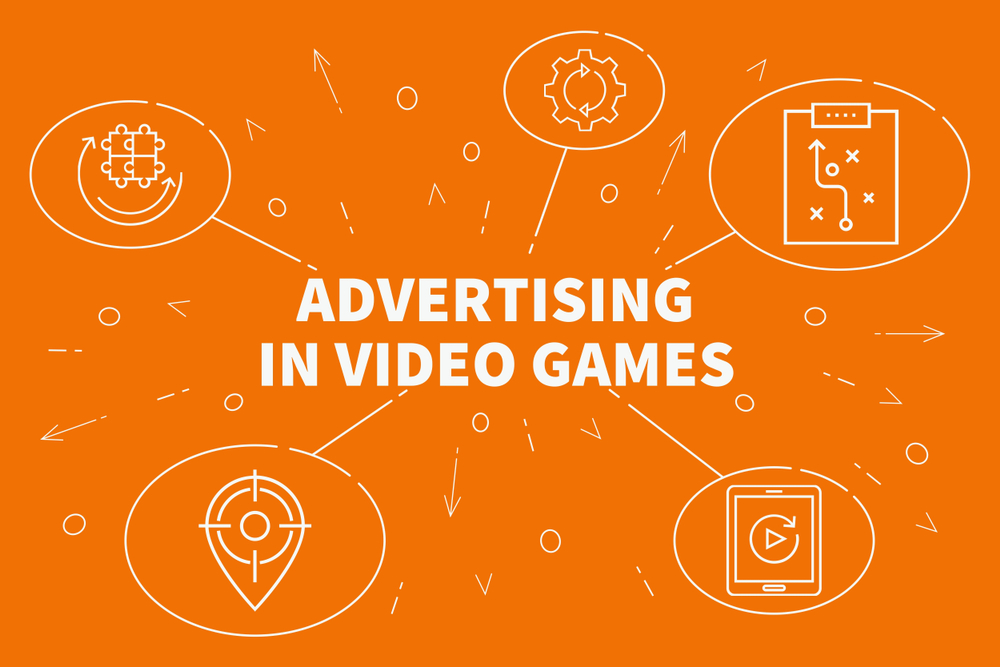Is In-Game Advertising effective? Which factors should you consider?

The video game industry has never been so popular. After the evolution of video games, it has become one of the world’s most entertaining media. Fans wait for months and even years for their favorite games to come out. Additionally, newer game formats are being also being launched now and then. For example, the recent popular games include multi-players battle royale games like Fortnite or Apex Legends. Gamers stream these games live for their viewers on platforms that game enthusiasts enjoy watching for their gaming skills. Also, million-dollar competitions are held where the best players compete against each other for the prize money.
Besides, gamers also upload videos of game walk-throughs. In these videos, game enthusiasts watch gamers play the game and see the game’s plot uncovered. Thousands of gamers and video game enthusiasts have turned gaming into their full-time profession. The game companies have also cashed in this opportunity, and the industry is growing each year exponentially.
Should you look at the gaming industry for advertising?
A study by GlobalData says that just the mobile gaming industry is slated to be worth 272 billion US dollars by 2030. Therefore, the gaming industry is bigger than the Hollywood film industry.
Needless to say, advertisers and marketers are digging the traction that the gaming industry has garnered. They get the opportunity to engage with extremely invested viewers directly. Moreover, millions of ardent followers of several video game players in several platforms are a promising pool of consumers. TV or mobile advertising might indeed let you tap into the most influential age group of customers. However, through advertising in games, or in-game advertising, you will target a niche audience – the Millenials.
The Millenials are more active on these streaming platforms. They are not interested in listening to the radio, watching television, going through newspapers, etc. While initially, the gaming industry mainly attracted male millennials, the scenario is now changing with more female gaming enthusiasts joining the scene. Therefore, for advertisers, the industry allows reaching out to a key demographic.
Consequently, with the amalgamation of the gaming and the advertising industry, a multi-million dollar industry is born. This industry promotes highly engaging content and advertising in two ways – advergaming and in-game advertising.
In-Game Advertising:
As the name suggests, In-Game Advertising (IGA) is advertising in video and computer games. Marketers prefer integrating advertisements in popular mobile and computer/ console games. The ads appear in pop-up messages, on-screen advertisements, cut scenes, background displays, and billboards. In this kind of advertising, the gaming companies sell the virtual spaces in their games for advertising purposes, just like how air time is rented for TV and radio advertising.
Mobile advertising has been contributing actively to IGA. The device is the perfect medium for pop-up ads, cutaways, and videos for advertising. Game developers have also found a new way to engage viewers with ads. They have started including reward systems in-game currency) to viewers for viewing a video advert.
Advergaming:
Advergaming is a process where global brands collaborate with video game companies to produce a blend of both. As is evident from the name, ‘advergaming‘ involves advertising in a video game. This concept is not new to the market as LEGO collaborated with Star Wars, Marvel, Lord of the Rings, Harry Potter, etc. The result has been the advertisement of both films and video games.
Likewise, several advertisers and video game companies have been working together on advergaming campaigns. The biggest probable example is the collaboration of the video game ‘Fortnite’ and Marvel Studios Entertainment. The battle royale game, Fortnite, included Marvel characters as playable characters just around the Marvel movie ‘Avengers: End Game’. The studio exchanged the favor by promoting Fortnite by showing the prime character ‘Thor’ play the game. Therefore, advergaming works to benefit the marketers and the game developers mutually.
Moreover, advergaming is more interesting, engaging, and mesmerizing. As brand and game developers integrate advertising and gaming coherently, they produce a contextual experience. So, with a strong context of advert integration, brands have been successful in promising an immersive brand experience. With this advantage, advertisers have been able to tap into niche demographics and relevant consumers. As games include adverts into their narrative, viewers build a positive impression of the brand. Therefore, this alliance between the game and the brand fosters a subconscious association of the gamers with the brand.
So, which one should you opt for – In-Game Advertising or Advergaming?
The answer depends on the marketers’ overall goal with the campaign for their brand. In-Game advertising, or specifically mobile in-game advertising, is accessible to all. It offers services for all budget ranges, thus making itself open for companies of all sizes and types. In addition, mobile in-game advertising has a more product-selling edge than its counterpart. For instance, its click-through link feature provides direct access to the brand. Besides, marketers go for mobile in-game advertising if their goal is to convert the viewer to a consumer immediately. For instance, advertisers prefer mobile advertising for app downloads or website visits.
Furthermore, if the marketer aims to give the viewer an unadulterated brand awareness, they opt for in-game advertising in computer or console games. One of the most significant features of in-game advertising is that it does not cause much interruption in the game viewing experience. Therefore, the adverts seem less forced, and the players can play seamlessly. As the advertisements feel less intrusive, they have the ability to clock greater brand impressions for marketers.
On the other hand, if the brand goal is to make a greater investment that will produce a guaranteed positive impact, then advergaming is the way. Even though advergaming involves greater monetary risk than in-game advertising, it will create a brand buzz right from the game launch day. Besides, collaborating with a popular video game company will reinforce traction for your brand. This is the reason why advergaming has been rewarding for most brands when executed the right way.
So, whether you wish to invest in games or collaborate with game companies, it is important to find the right context. Context and authenticity are key factors in the gaming industry, which could be beneficial or detrimental to your brand’s image if not executed properly.







